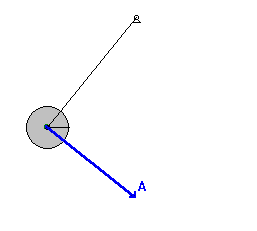Mechanical energy
Mechanical energy is the sum of potential energy and kinetic energy present in the components of a mechanical system. This form of energy is associated with the motion and position of an object. The concept of mechanical energy is fundamental in the field of physics, particularly in the study of classical mechanics.
Definition[edit | edit source]
Mechanical energy can be defined as the energy which is possessed by an object due to its motion or its stored energy of position. Mechanical energy can be either kinetic energy, which is energy due to an object's motion, or potential energy, which is energy stored due to an object's position or state.
Kinetic Energy[edit | edit source]
Kinetic energy (\(KE\)) is the energy that an object possesses because of its motion. It is defined as the work needed to accelerate a body of a given mass from rest to its stated velocity. Once this energy has been transferred, it remains with the body until its speed changes. The kinetic energy of an object is given by the equation \(KE = \frac{1}{2}mv^2\), where \(m\) is the mass of the object and \(v\) is its velocity.
Potential Energy[edit | edit source]
Potential energy (\(PE\)), on the other hand, is the energy held by an object because of its position relative to other objects, stresses within itself, its electric charge, or other factors. Gravitational potential energy, for example, is the energy stored in an object as it is held above the ground, and is calculated by the equation \(PE = mgh\), where \(m\) is mass, \(g\) is the acceleration due to gravity, and \(h\) is the height above a reference point.
Conservation of Mechanical Energy[edit | edit source]
The principle of the conservation of mechanical energy states that if an object is only subject to conservative forces (such as gravitational force, and assuming no frictional forces), the mechanical energy of the system remains constant. This means that potential energy can be converted to kinetic energy and vice versa, but the total amount of mechanical energy remains the same.
Applications[edit | edit source]
Mechanical energy is a key concept in various applications, including engineering, automotive design, and architecture. It plays a crucial role in the design of machines and structures, ensuring they operate efficiently and withstand forces without excessive deformation or failure.
Examples[edit | edit source]
A simple example of mechanical energy at work is a pendulum. As it swings, its energy continuously shifts between kinetic and potential. At the highest points of its swing, the pendulum has maximum potential energy and minimum kinetic energy. As it passes through the lowest point of its swing, its potential energy is at its minimum while its kinetic energy is at its maximum.
Another example is a roller coaster. At the top of a hill, the cars have maximum potential energy. As they descend, this potential energy is converted into kinetic energy. The conservation of mechanical energy principle allows these cars to reach the top of the next hill, assuming negligible air resistance and friction.
See Also[edit | edit source]
Navigation: Wellness - Encyclopedia - Health topics - Disease Index - Drugs - World Directory - Gray's Anatomy - Keto diet - Recipes
Search WikiMD
Ad.Tired of being Overweight? Try W8MD's physician weight loss program.
Semaglutide (Ozempic / Wegovy and Tirzepatide (Mounjaro) available.
Advertise on WikiMD
WikiMD is not a substitute for professional medical advice. See full disclaimer.
Credits:Most images are courtesy of Wikimedia commons, and templates Wikipedia, licensed under CC BY SA or similar.
Contributors: Prab R. Tumpati, MD



